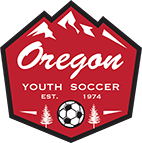The pay-to-play model in youth soccer has become one of the most hotly debated topics in the American sports landscape. Critics often scream from the rooftops that the system is broken beyond repair, demanding a total overhaul of how we develop players in this country. I get where that frustration comes from. But I’m not one of those people who believes U.S. Soccer is fundamentally broken. I believe we’ve made incredible strides in the last couple of decades. The growth of the game is real. The talent is rising. The infrastructure is improving. But like any growing system, there comes a time when you have to pause, assess, and correct the course. That’s where we are now.
At the heart of the discussion is the pay-to-play model—a structure where families bear the financial burden of club fees, tournament travel, private training, and showcase events. For older, highly motivated players with a clear goal of playing at the collegiate or professional level, this system can offer significant advantages. Exposure to scouts, competitive games, and experienced coaches can accelerate development and open doors. That part of the model isn’t the issue. In fact, it can be hugely beneficial when applied at the right stage of a player’s journey.
The problem is when we apply this system—this high-investment, high-pressure structure—to very young players. When 9-, 10-, or 11-year-olds are caught in the pay-to-play machine, the model begins to extract more than it gives. And what it often takes away is balance.
Kids lose the freedom to explore other sports, spend time with family, be involved in school activities, or just have unstructured fun. The early specialization that pay-to-play encourages is risky. Study after study shows it increases the likelihood of burnout and injury while decreasing overall athletic and emotional development. A 10-year-old shouldn’t have to decide between playing soccer year-round or missing out on being a kid.
I’ve seen incredibly talented young players fall out of love with the game—not because they lacked ability, but because they were drained by the demands of a system that asked too much, too early. That’s the risk side of the equation. And it’s not just a physical risk, it’s an emotional and developmental one too. The personal growth that comes from trying new things, being in different environments, or just making mistakes outside of a single identity as “the soccer kid” is often lost.
To be clear: I’m not saying we tear the whole thing down. I’m saying we need to rethink how and when we apply intensity and investment. There should be a larger window for younger players to explore and enjoy the game without the looming pressure of performance or the weight of financial commitment. We need more community-based programs that bridge the gap between recreational and elite levels, especially for families who can’t afford the current price tag of development.
We also need to stop treating pay-to-play as the only path. Alternative routes—like school-based teams, futsal, and local club programs—can offer meaningful development and joy, especially in the foundational years. If we broaden our definition of success, we can build a soccer culture that values the whole player, not just the resume.
This isn’t about burning it all down. It’s about tuning the system so it serves more kids in better ways. I want to be someone who contributes to that conversation—not by shouting into the wind about what’s wrong, but by helping build what could be right.
Because when we get it right, soccer won’t just produce better players—it’ll help raise better people. And that’s the kind of win that lasts.

